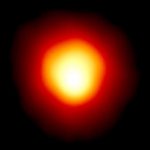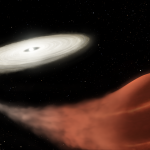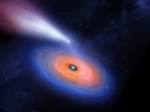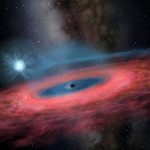THE CONTINUING MYSTERY OF BETELGEUSE0
- From Around the Web, Space
- February 10, 2020
For months, astronomers have been keeping a wary eye on Betelgeuse, the bright red star in Orion’s shoulder.

For months, astronomers have been keeping a wary eye on Betelgeuse, the bright red star in Orion’s shoulder.

The red giant star engulfed its smaller stellar companion

Einstein’s theory of relativity has been proven right once again.

An undead vampire star feeds on its victim, the two tug hard on this lifeblood swirling in space — then boom, and repeat.

With over 4,000 confirmed exoplanets, we’re starting to get an idea of which types are common and which are rare. We’ve learned that our solar system is rather unusual in ways you wouldn’t expect. Take, for example, the presence of large planets orbiting small stars.

One of the brightest stars in the sky makes up Orion’s shoulder and also looks to be on the verge of going supernova sometime between today and 100,000 years from today.

Stars and comets make unlikely dance partners. Their gravitational partnership is one that astronomers have long suspected but have never seen — until now. For the first time, a Polish group has identified two nearby stars that seem to have plucked up their icy partners, swinging them into orbits around our sun.

The exotic system provides a preview of our own solar system’s fate.

About 15,000 light years away, in a distant spiral arm of the Milky Way, there is a black hole about 70 times as heavy as the Sun.

Astronomers note record-breaking observation of highest energy ever measured from gamma ray bursts